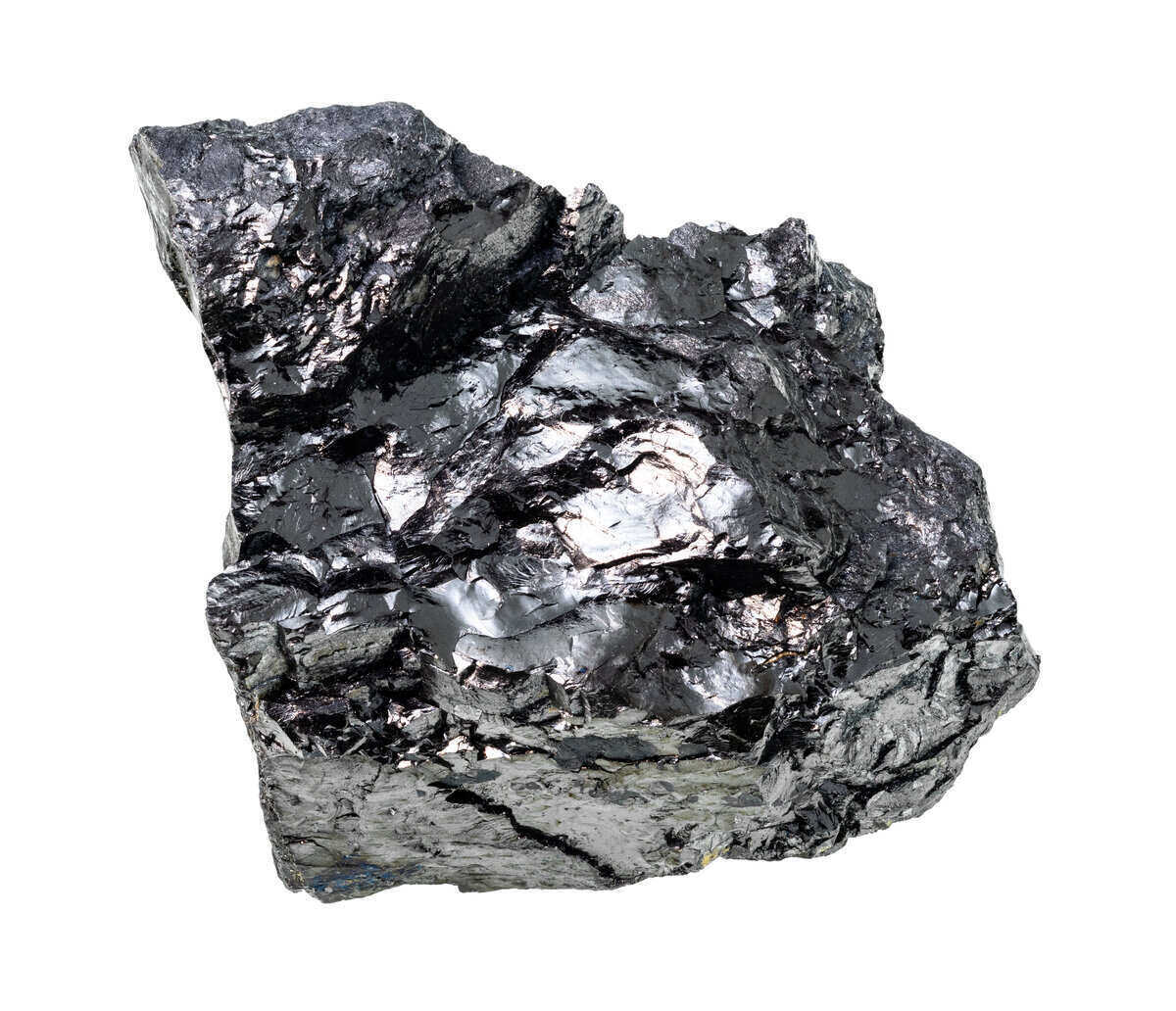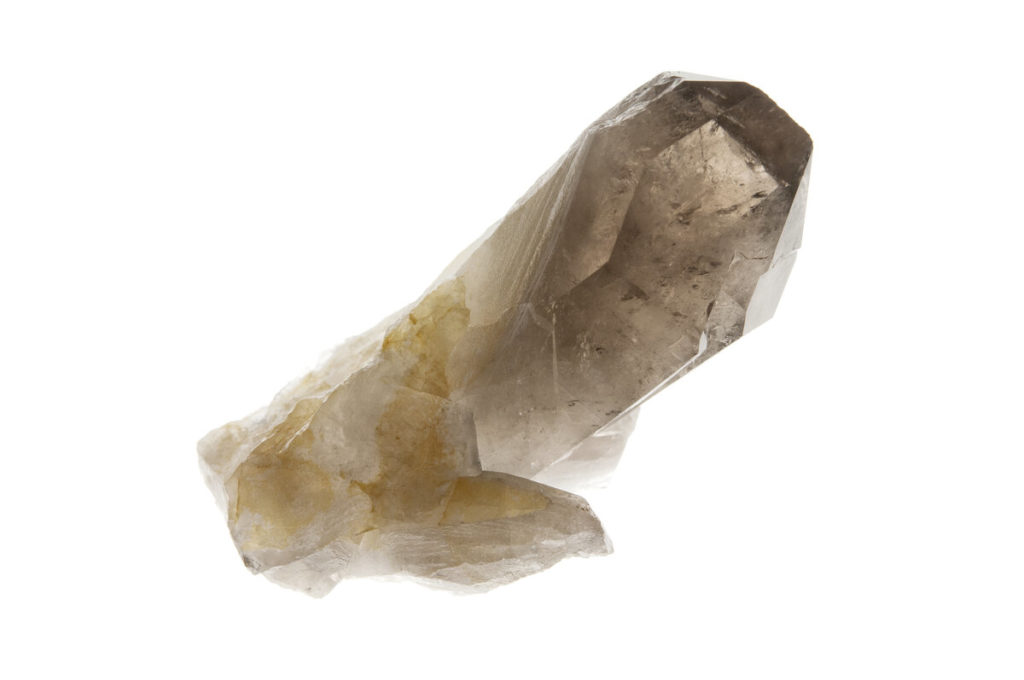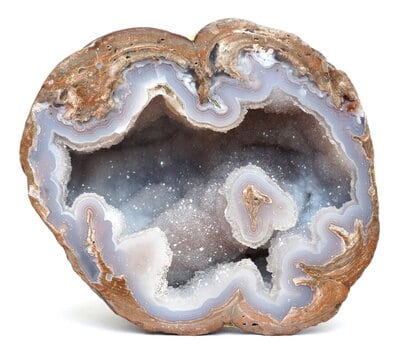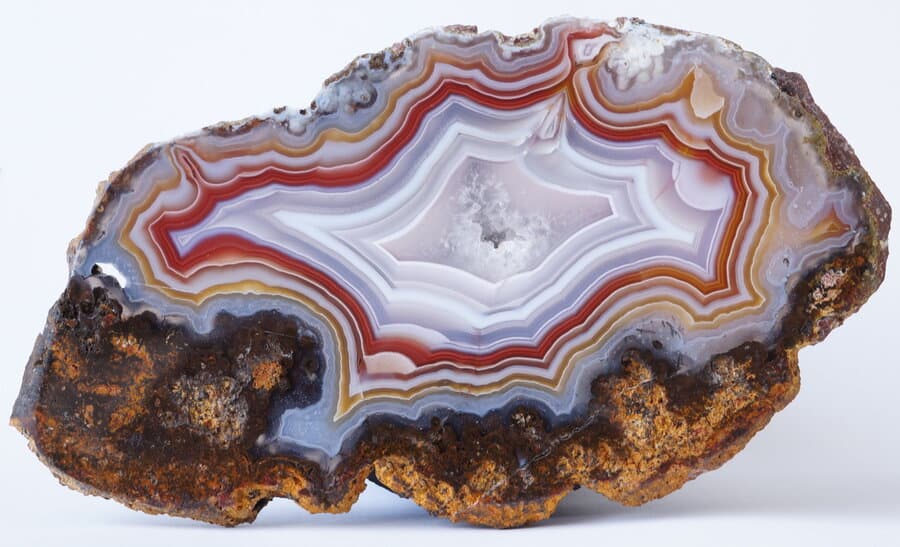Whether you’re new to rockhounding in West Virginia or you’re just looking for some new locations to search, I’ve put this guide together for you so that you’ll feel confident knowing where to look and what you can find.
West Virginia is world-famous for its coal mining, but there is much more to the regional geology than just coal. You can find quite a wide selection of interesting rocks and minerals including quartz, calcite, and petrified wood if you know where to search.
Most of the prime rockhounding sites in West Virginia are concentrated in the eastern part of the state where the Allegheny Mountains, as part of the Appalachian Range, expose ancient volcanic and metamorphic rocks. There also happens to be quite a bit of public land in this area which is, in general, open to the public for collecting.
The best places to rockhound in West Virginia are outcrops, quarries, and gravels in the Allegheny Mountains, particularly in Monogahela National Forest. The area south of Charleston is a popular spot for finding petrified wood, and the southern Alleghenies are notable for their quartz crystals.
| State Symbols | |
|---|---|
| State Mineral | — |
| State Rock | Bituminous coal |
| State Gemstone | Fossilized coral |
| State Fossil | Megalonyx jeffersonii |

Rocks and Minerals Found in West Virginia
When compared to most of its neighboring states, West Virginia doesn’t contains quite the variety of interesting rocks and minerals that you might hope for. Still, you can find quite a few worthwhile specimens scattered all throughout the state.
Quartz-family gemstones like jasper, opal, chert, and petrified wood are relatively common in West Virginia, as are quartz crystals. The quartz crystals range from perfectly clear rock crystal to dark gray smoky quartz.
West Virginia is, of course, famous for its coal mines. Beyond that, mining in West Virginia is mostly limited to sand and limestone quarries where you can often find minerals like dolomite, calcite, and siderite. There is almost no history of mining precious metals like gold or silver.
A large swath of West Virginia surface geology is comprised of fossiliferous sedimentary rocks which contain a wide selection of fossils but are most notable for fossilized coral. In fact, fossilized coral is so prevalent in some areas that it is West Virginia’s state gemstone.
The most commonly found and collected rocks and minerals in West Virginia are:
- Petrified wood
- Quartz
- Jasper
- Calcite
- Dolomite
- Siderite
- Silicified coral
- Chert
- Opal
- Fossils

If you’ve already found a rock and you’re not sure what it is, I would highly recommend checking out my Practical Rock Identification System. This bundle of information includes a book, videos, and online tools. It is, simply put, the most comprehensive and easy-to-understand rock identification system you’ll find anywhere.
You can also read through my free rock identification guide and mineral identification guide which are filled with useful information and tools.
Where to Rockhound in West Virginia
Important Disclaimer: I have not been to these locations myself, and I do not know if they are currently open for collecting. Use this resource as a guide to get you started. Follow posted signage and always get permission from the landowner to collect.
Through quite a bit of research and cross-referencing of available literature, I have compiled this list of some prospective locations in West Virginia which I would recommend to people looking to do some rockhounding. These are mostly comprised of old mining prospects, washes, streams, and historically known rock and mineral collecting sites. For additional reading, I’d highly recommend these books you can find on Amazon:
Please remember that rock collecting locations are constantly changing. Specimens may become depleted from other collectors, the location may have been built on or altered, locality information in literature may be inaccurate, and property ownership may have changed hands. Joining up with a local rockhounding club for a group trip can often get you access to otherwise off-limits locations like privately owned mines and quarries. There are many rockhounding clubs in South Dakota so you can most likely find one you like nearby.
I have tried to take care not to list locations within National Park boundaries since collecting is illegal there, but please remember that it is up to you to make sure you have permission to collect wherever you are. There is plenty of BLM and National Forest land to collect on in West Virginia which is, in general, open for public use. Still, there may be privately owned mining claims inside those boundaries and you’ll need to get permission to collect on that location.
Though there are many locations listed here, this list is far from exhaustive. A location’s listing here is not a guarantee of accuracy. Be safe, never go underground, and make sure to get permission from the landowner to search for and collect specimens.
If you’re planning on heading to the field, make sure you have all the gear you’ll need! To get started, you can check out my recommended gear page which contains my full reviews for every Geologist’s favorite rock hammer and the best hiking backpack I’ve ever owned.
West Virginia Rockhounding Sites
Like most other states in the Appalachian Mountain Range, West Virginia has plenty of great rockhouding sites for you to explore. There are countless outcrops and old quarries where ancient rocks of all varieties are exposed to reveal interesting minerals that people can collect.
In general, West Virginia doesn’t have quite the rockhounding legacy as some of its neighbors, but there is still plenty of opportunities to find a wide selection of really nice pieces. Most of the surface is fossiliferous sedimentary rock which doesn’t tend to contain interesting gemstones but does present quite a few places to find fossils.
The Allegheny Mountains are definitely the place to start if you’re looking to get out and do some rockhounding, particularly in Monongahela National Forest where collecting is permitted (as long as you aren’t on someone’s claim). This highly mineralized and geologically complex area has many locations where you can find specimens like calcite and quartz crystals, dolomite, and even geodes!
The southern Alleghenies between Alderson and Asbury are probably the best place to search for quartz crystals. If you search in the area streams and gravels you can often find clear and smoky quartz crystals, some of which are beautifully terminated with nice points.
The area just south of Charleston is a great place to find petrified wood. Try searching in stream gravels in the woods, particularly around Berry Hills Country Club.
Where to Find Geodes in West Virginia

Everyone enjoys the prospect of finding their very own geodes out in the wild, and it’s easy to see why. Cracking them open reminds me of opening a Kinder-Egg with a surprise toy inside. You never know what type of crystals or patterns you’re going to find inside and it makes them incredibly exciting.
Geodes are pretty rare in West Virginia, so you’ll either need a lot of luck, know-how, or both in order to find them. I was only able to find one reference to a geode locality anywhere in the state.
The best place to find geodes in West Virginia is near Smoke Hole, in large limestone outcrops. You can also search in nearby stream gravels where geodes may have eroded out of the cliff faces.
Tip: Not sure if the rock you’ve found is a geode? Check out my article about how to identify a geode.
For additional places to search for geodes, you may want to expand your search radius and head to a neighboring state like Virginia or Kentucky.
Where to Find Agates in West Virginia

I love finding agates because you never know what sort of beautiful patterns and colors they might contain. They are some of the most popular rocks to tumble, and it’s easy to see why with their intricate banding and unique designs.
Agates also happen to be some of the most commonly collected rocks in the United States, but in West Virginia they are surprisingly rare. While you can find other quartz-family gemstones like jasper and petrified wood, I was not able to find any records of agate localities.
If you’re looking for agates in West Virginia you may be able to find some in Mercer County, but overall the state is relatively devoid of agates. You can find agates in abundance in neighboring states like Virginia and Kentucky.
Tip: For more info about agates and where to find them, check out my article here.
For additional locations to search for agates (and other rocks) you can check out my Virginia and Kentucky rockhounding location guides.
West Virginia Rockhounding Laws & Regulations
One of the most common questions rockhounds have is whether or not they are allowed to collect at a certain location. It is the responsibility of each rockhound to obtain permission from a landowner to search and/or collect on a piece of property.
The ownership and status of land can and does change frequently, making it impossible to document accurate information for every location on this page. However, I have compiled a list of resources here so that you may investigate and obtain permission for any locations (found here or elsewhere) for yourself.
Public Land Resources
I have written entire articles which cover the rockhounding laws and regulations for nearly every type of public land you can think of. I encourage you to check them out if you are curious about the legalities of rock and mineral collecting.
- Rockhounding on Public Land: Laws and Regulations
- Can You Collect Rocks in State Parks? All 50 States Answered
To determine what type of public land a particular location is on, I would recommend starting with West Virginia’s Department of Natural Resources recreation maps.
Private Land Resources
As with most states, each county in South Dakota will have records of who owns each piece of property. You can also usually get the landowner’s name and address by visiting the county records office. I would probably start by contacting the assessor in whatever county you’re interested in and getting whatever contact information you can for the landowner.
Sources & Further Reading
The locations and information contained in this article are primarily derived from academic papers, online resources, and other outside sources. If you would like to read some of the source material for yourself I have listed them below. The majority of these locations are my interpretation of Robert Beste’s A Location Guide for Rock Hounds in the United States. Other sources include:
- mindat.com
- West Virginia Department of Natural Resources
- West Virginia Geological & Economic Survey
- Finding Gemstones in West Virginia
- West Virginia Geological Survey Maps
This post is part of my State-By-State Rockhounding Guides series. Please check out more states for thousands of additional sites to go rockhounding!
